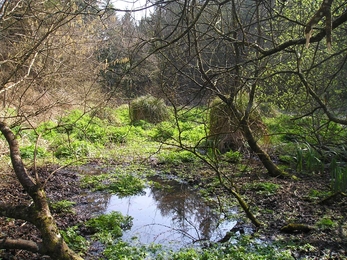Today I dragged a net slowly and gently along the duckweed-covered surface of our small garden pond and what do you think I caught?
My catch was quite dramatic actually – the net was writhing with dark brown palmate newts (Lissotriton helveticus), wet and shiny from the water and very slippery. They had been lurking together just beneath the surface of the water.


